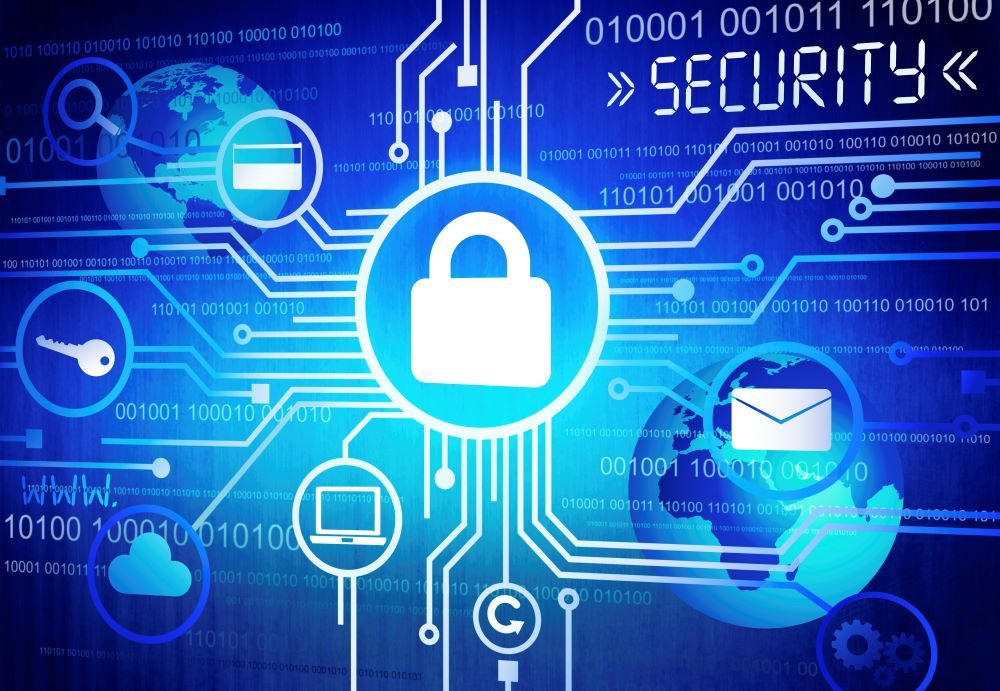In an increasingly digital world, the importance of cybersecurity and data backup cannot be overstated. March marks two significant events that underscore this necessity: Fraud Prevention Month and World Backup Day. These observances serve as timely reminders for individuals and organizations alike to fortify their defenses against cyber threats and safeguard their invaluable data.
Significance of Fraud Prevention Month

Fraud Prevention Month, observed annually in March, aims to raise awareness about various types of fraud and empower individuals to protect themselves against financial scams and identity theft. In Canada, the Canada Revenue Agency (CRA) actively participates in this initiative, educating taxpayers about common scams and providing resources to enhance their cybersecurity posture.
During Fraud Prevention Month, the CRA collaborates with other government agencies, financial institutions, and community organizations to educate Canadians about prevalent scams and fraudulent activities targeting taxpayers. Through educational campaigns, webinars, and outreach initiatives, the CRA disseminates information about identity theft, phishing scams, tax-related fraud, and other deceptive practices.
The CRA warns taxpayers about fraudulent communications, such as phishing emails, text messages, and phone calls, purporting to be from the CRA or other government entities. These fraudulent communications often seek personal information, financial details, or prompt individuals to click on malicious links or download harmful attachments. By raising awareness and providing guidance on recognizing and reporting fraudulent activities, the CRA empowers Canadians to safeguard their personal and financial information against cyber threats.
Role of World Backup Day
Coinciding with Fraud Prevention Month, World Backup Day on March 31st emphasizes the importance of regularly backing up data to mitigate the risk of data loss due to cyber incidents, hardware failures, or other unforeseen circumstances. This global initiative encourages individuals and businesses to implement robust backup strategies to safeguard their digital assets.
World Backup Day serves as a reminder for individuals and organizations to assess their backup practices and ensure the resilience of their data against potential loss or corruption. By promoting the adoption of backup solutions and best practices, World Backup Day aims to minimize the impact of data loss incidents on productivity, continuity, and reputation.
In today’s digital landscape, data serves as the lifeblood of organizations, encompassing critical business operations, intellectual property, customer information, and financial records. The loss or compromise of data due to cyberattacks, system failures, or human error can have devastating consequences, including financial losses, legal liabilities, and reputational damage.
By embracing World Backup Day, individuals and businesses can mitigate these risks by implementing regular backup routines, storing backups securely, and verifying the integrity of backup copies. Whether utilizing cloud-based backup services, external hard drives, or network-attached storage (NAS) devices, the key is to establish redundant backup mechanisms that ensure the availability and recoverability of data across diverse scenarios.
Evolving Cyber Threat Landscape
Cyber threats continue to evolve in sophistication and scale, posing significant challenges to individuals and organizations worldwide. From ransomware attacks and phishing scams to sophisticated malware and insider threats, the cyber threat landscape is diverse and dynamic.
Ransomware attacks, in particular, have become increasingly prevalent, targeting businesses, healthcare organizations, government agencies, and individuals. These attacks encrypt critical data and demand ransom payments in exchange for decryption keys, causing disruption to operations and financial harm.
Phishing scams remain a prevalent tactic used by cybercriminals to trick individuals into divulging sensitive information such as login credentials, financial details, or personal data. Phishing emails often masquerade as legitimate communications from trusted entities, exploiting trust and familiarity to deceive recipients.
Malware, including viruses, worms, and trojans, pose a persistent threat to cybersecurity by infecting systems, stealing data, and compromising network security. Cybercriminals continuously develop and deploy new malware variants to evade detection and exploit vulnerabilities in software and hardware.
Insider threats, whether malicious or unintentional, can also pose significant risks to data security. Employees, contractors, or trusted partners with access to sensitive information may inadvertently compromise data through negligence or intentionally engage in malicious activities such as data theft or sabotage.
Top 10 Cybersecurity Measures to Prevent Data Loss

Strong Password Management
Encourage the use of complex passwords and multi-factor authentication (MFA) to enhance account security. For instance, avoiding easily guessable passwords like “password123” and opting for combinations of letters, numbers, and special characters significantly reduces vulnerability to password-based attacks. Additionally, suggest using password managers to securely store and generate unique passwords for different accounts, reducing the risk of credential reuse.
Regular Software Updates
Emphasize the importance of installing software updates and security patches promptly. Outdated software often contains vulnerabilities that cybercriminals exploit to gain unauthorized access to systems. The WannaCry ransomware attack in 2017 exploited such vulnerabilities, causing widespread disruption. Provide examples of organizations that suffered breaches due to delayed patching, highlighting the financial and reputational consequences of neglecting software updates.
Phishing Awareness Training
Educate individuals about phishing techniques used by cybercriminals to trick users into divulging sensitive information. Provide examples of phishing emails impersonating legitimate entities, such as banks or government agencies, and advise on verifying the authenticity of requests before responding or clicking on links. Illustrate the effectiveness of phishing awareness training in reducing susceptibility to phishing attacks and protecting personal and corporate data.
Secure Wi-Fi Networks
Encourage the use of encrypted Wi-Fi networks and strong passwords for routers to prevent unauthorized access. Illustrate the risk of unsecured Wi-Fi networks through examples of data interception and unauthorized network intrusion. Additionally, recommend disabling Wi-Fi Protected Setup (WPS) and enabling network encryption protocols like WPA3 to enhance Wi-Fi security and thwart attacks.
Data Encryption
Implement encryption protocols to protect sensitive data both in transit and at rest. Highlight the importance of encrypting files and communications to thwart eavesdropping attempts by malicious actors, especially when sharing confidential information over the internet or cloud storage platforms. Provide examples of data breaches where encryption could have prevented unauthorized access to sensitive data, underscoring its role in maintaining data confidentiality.
Employee Training and Awareness
Foster a culture of cybersecurity awareness within organizations by providing comprehensive training programs for employees. Offer simulated phishing exercises and real-world scenarios to help staff recognize and respond effectively to potential security threats. Highlight the role of employees as the first line of defense against cyber threats and emphasize the importance of ongoing training to stay vigilant against evolving attack techniques.
Regular Data Backups
Stress the importance of regular data backups as a critical component of disaster recovery planning. Advocate for automated backup solutions that ensure the continuous protection of essential files and databases against data loss incidents like hardware failures or ransomware attacks. Provide guidance on implementing backup schedules and storage redundancy strategies to minimize the risk of data loss and facilitate timely data recovery. You can also try segmenting networks into distinct zones or segments. It helps contain the spread of malware and limit unauthorized access to sensitive resources. By dividing networks based on security requirements and access levels, organizations can reduce the impact of security incidents and improve overall network security.

Firewall Implementation
Deploy firewalls and intrusion detection systems to monitor and filter network traffic, thereby preventing unauthorized access and detecting suspicious activities. Demonstrate how firewalls act as the first line of defense against external threats seeking to infiltrate internal networks. Additionally, recommend configuring firewalls to enforce access control policies based on application, user, and content, further strengthening network security posture. You can focus on endpoint security solutions, including antivirus software, intrusion detection systems, and endpoint detection and response (EDR) tools. These tools help safeguard individual devices such as laptops, desktops, and mobile devices from malicious activities. These solutions provide real-time threat detection, behavior analysis, and proactive response capabilities to protect endpoints from malware infections, data breaches, and unauthorized access.
Access Control and Privilege Management
Enforce the principle of least privilege by restricting access to sensitive data and resources based on job roles and responsibilities. Emphasize the need for strong access controls to mitigate insider threats and unauthorized data access. Provide examples of data breaches resulting from compromised credentials or excessive user privileges, highlighting the importance of implementing role-based access controls and regular access reviews.
Incident Response Planning

Develop comprehensive incident response plans outlining procedures for detecting, responding to, and recovering from security incidents. Conduct regular tabletop exercises to test the effectiveness of incident response protocols and refine them based on lessons learned. Emphasize the importance of a coordinated response effort involving IT security teams, legal counsel, and senior management to minimize the impact of security incidents and ensure business continuity.
Conclusion
As we commemorate Fraud Prevention Month and prepare for World Backup Day, it’s imperative to recognize the interconnected nature of cybersecurity and data protection. By implementing robust cybersecurity measures and embracing proactive data backup strategies, individuals and organizations can fortify their defenses against cyber threats and mitigate the impact of data loss incidents. Let’s harness the collective power of awareness, education, and preparedness to safeguard our digital assets and navigate the evolving landscape of cyber risks with confidence.
ABM College’s Cybersecurity Diploma program is an in-depth 70-week program that helps prepare students for a successful career in cybersecurity. Students learn how to safeguard digital information and tactics to mitigate cyberattacks and risks. With ABM College’s online cybersecurity course students also have the opportunity to apply the skills they have learned in real-life with a practicum. ABM College also offers this program in Manitoba and New Brunswick.
Contact us now to learn more about this program.
Read more articles on our blog.
About The Author

Private Career College
ABM College is a leader in career-focused education, committed to empowering students with industry-relevant skills. With expert instructors and practical training, ABM College delivers high-quality programs in health, business, technology, and more, ensuring graduates are prepared to meet workforce demands. Known for its supportive learning environment and a focus on real-world application, ABM College is a trusted educational partner helping students achieve professional success across Canada.
